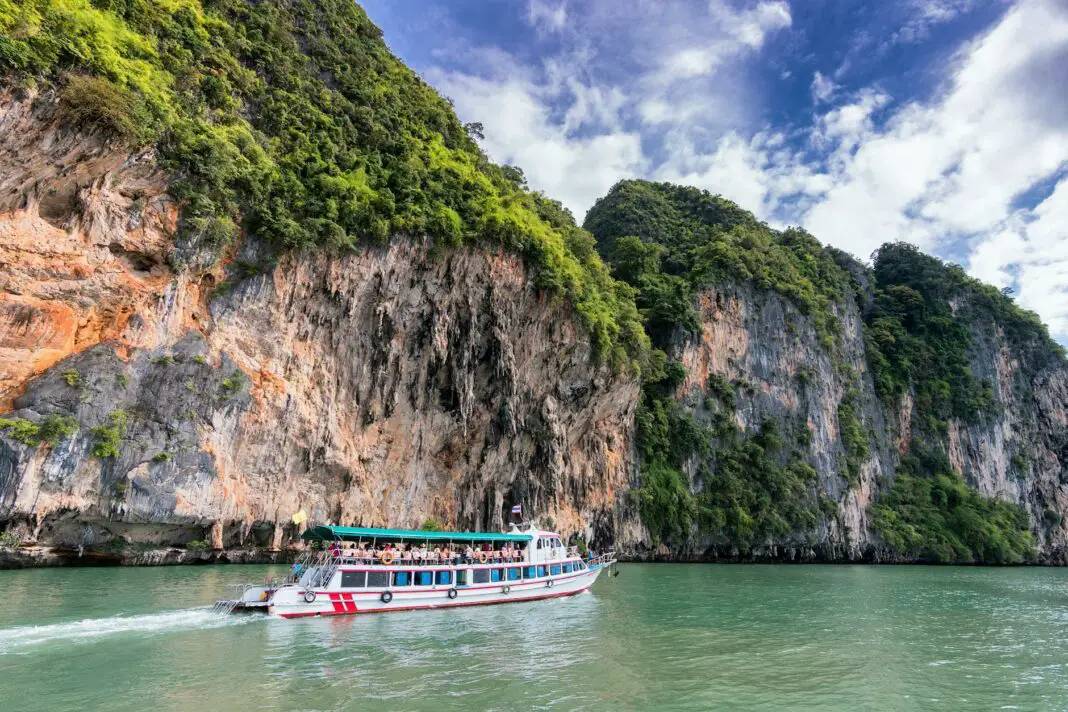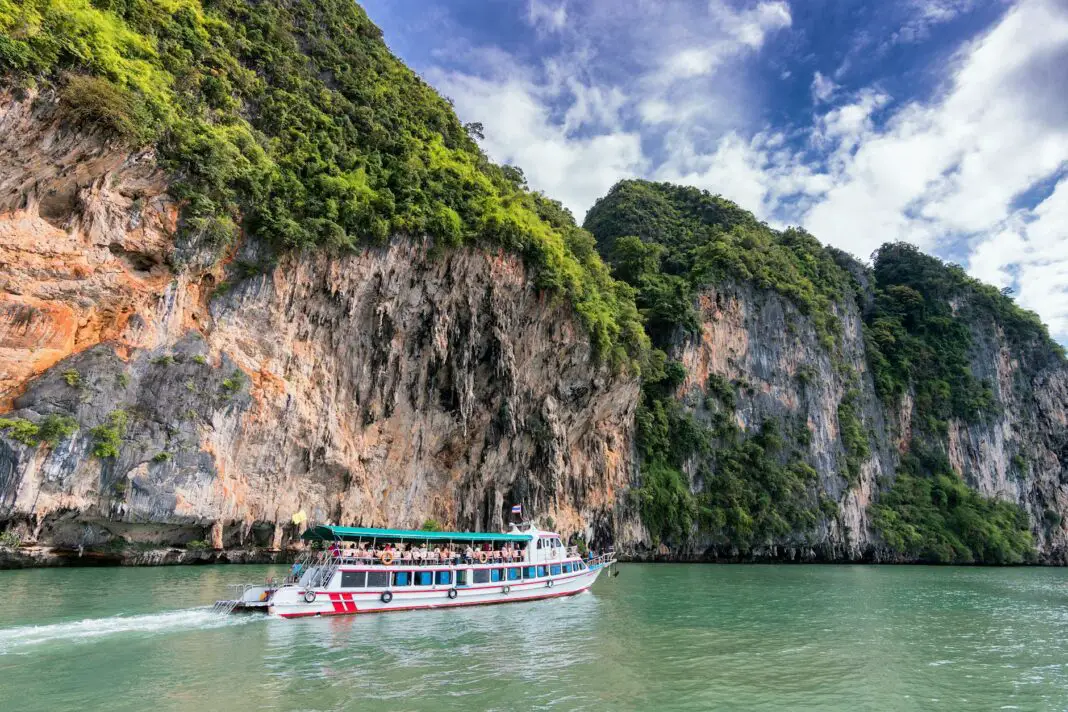Exploring Thailand: A Gateway to Marine Conservation
Discover the hidden treasures of Thailand, a stunning destination renowned for its breathtaking beaches, vibrant culture, and delicious cuisine. Nestled in the heart of Southeast Asia, this tropical paradise offers more than just postcard-perfect views—it is a cornerstone of marine conservation efforts. From crystalline waters teeming with wildlife to committed conservation programs, a trip to Thailand is not just a vacation; it’s an opportunity to engage with nature and witness firsthand the extraordinary efforts being made to protect marine ecosystems.
As you venture through the islands and coastal regions, you will find diverse marine life flourishing under the waves, showcasing nature’s beauty and fragility. Thailand’s strategic position along the Coral Triangle, the world’s marine biodiversity hotspot, makes it pivotal in global conservation efforts. This blog post delves into the enchanting wonders of Thailand and highlights why this destination is crowned the ultimate paradise for marine conservation.
Table of Contents
- The Importance of Marine Conservation
- The Biodiversity of Thailand’s Waters
- Top Marine Conservation Sites in Thailand
- Sustainable Tourism Initiatives
- Real-Life Impact Stories
- What You Can Do to Help
- Join the Marine Conservation Journey
The Importance of Marine Conservation
Marine conservation plays a crucial role in maintaining the delicate balance of our ecosystems. Oceans cover approximately 71 percent of Earth’s surface, serving as a primary source of food, oxygen, and climate regulation. With marine habitats being increasingly threatened by pollution, overfishing, and climate change, the urgency to protect these environments has risen exponentially. Thailand understands this necessity and has implemented numerous efforts to aid in safeguarding its marine ecosystems. The country’s vibrant corals, mangroves, and seagrass beds are essential to the health of global oceans. Consequently, every trip to Thailand not only immerses you in its beauty but also supports crucial conservation undertakings.
Moreover, protecting marine biodiversity goes hand in hand with sustaining local economies. Many coastal communities rely on fishing and tourism, highlighting the intersection between environmental health and human livelihoods. By participating in marine conservation, tourists play an active role in preserving cultural and economic vitality. Drawing awareness and educating visitors on the significance of these ecosystems fosters a greater appreciation and responsibility towards marine stewardship.
The Biodiversity of Thailand’s Waters
Thailand’s waters are a mosaic of vibrant ecosystems teeming with life. From the dazzling coral reefs of Ko Phi Phi to the ancient mangroves of Koh Samui, the country boasts rich biodiversity that stirs the soul. The Coral Triangle, where Thailand resides, is often referred to as the Amazon of the sea, with over 600 species of coral and countless marine creatures, including majestic manta rays and playful dolphins. This incredible diversity illustrates not only the beauty of Thailand’s marine life but also the importance of conservation efforts for sustaining such an extraordinary environment.
In addition, the different ecosystems found throughout Thailand harbor unique species that cannot be found elsewhere. This uniqueness, coupled with the threats faced by these habitats, emphasizes the need for immediate action to protect them. Engaging in snorkeling or diving activities allows visitors to witness this marine wonder up close while fostering a connection that encourages involvement in conservation. Ultimately, understanding the scope of biodiversity enriches the travel experience, making a trip to Thailand unforgettable.
Top Marine Conservation Sites in Thailand
There are numerous marine conservation sites in Thailand that highlight the country’s commitment to protecting its coral reefs and marine life. One of the most famous is the Similan Islands National Park. Recognized as one of the world’s premier diving destinations, this area is home to breathtaking underwater scenery, making it an ideal place for both recreational divers and marine conservationists alike. The restrictions on diving and fishing in this region promote the recovery of marine ecosystems, allowing fish populations to thrive.
Another noteworthy site is Koh Tao, famously dubbed the diver’s paradise. However, this island is also a leading player in marine conservation. Initiatives such as turtle rehabilitation and coral restoration projects actively engage the local community and tourists, creating a harmonious balance between tourism and conservation efforts. By participating in these programs, visitors significantly contribute to the restoration of marine habitats, embodying the core values of sustainable tourism.
Sustainable Tourism Initiatives
Sustainable tourism is the backbone of marine conservation in Thailand. The government and various organizations have made strides in promoting responsible travel practices that safeguard natural resources. Programs such as eco-tours and volunteer opportunities allow visitors to actively engage in conservation efforts. By partnering with local communities, these initiatives not only raise awareness but also empower residents to take stewardship of their environment.
Moreover, educational programs within popular tourist areas further emphasize the importance of reducing plastic use and respecting marine habitats. By making small changes during your visit, such as opting for reusable water bottles or participating in beach clean-ups, you can make a substantial impact. These efforts cultivate a deep-rooted sense of responsibility among travelers, inspiring them to become advocates for marine conservation even upon their return home.
Real-Life Impact Stories
Many organizations and projects throughout Thailand showcase profound success stories in marine conservation. For example, the Andaman Sea Conservation Program has dedicated countless hours to restoring coral reefs and has seen a remarkable recovery in marine biodiversity in recently protected areas. Divers and snorkelers can immerse themselves in these thriving ecosystems, which stand as a testament to the power of conservation efforts.
Additionally, the Crowdfunding for Conservation initiative has successfully funded various projects aimed at protecting marine life and habitats. These collaborative efforts highlight the importance of integrated actions that involve local communities and tourists alike. By sharing these impactful stories, Thailand inspires global involvement and emphasizes that even small contributions can lead to monumental change.
What You Can Do to Help
If you find yourself mesmerized by the beauty of Thailand’s oceans, consider taking proactive steps in your personal and travel habits. Opt for eco-friendly tour operators, participate in local conservation programs, and educate fellow travelers on the significance of marine protection. Supporting local businesses that prioritize sustainability fosters a culture that values environmental integrity.
Moreover, adopting simple practices such as minimizing single-use plastics and taking nothing but photos can leave a positive legacy for future generations. Engaging in citizen science initiatives, such as reporting reef health or species sightings, can also be tremendously beneficial in assisting ongoing marine research. Each conscious decision reinforces a commitment to conservation, enhancing your travel experience while contributing to a greater cause.
Join the Marine Conservation Journey
Embarking on a trip to Thailand offers you an extraordinary opportunity to become actively involved in marine conservation. By diving into the rich underwater world and witnessing the beauty of thriving ecosystems, you can cultivate a personal connection to the oceans. Whether you’re exploring Thailand’s marine parks or engaging with local conservation initiatives, each experience cultivates awareness and inspires action.
Your journey will not simply culminate in stunning beaches and exhilarating adventures; you’ll also emerge as an advocate for marine health. As you share your stories and insights with others, you will be contributing to a more extensive network of marine conservation supporters. The power of positive change lies in our hands, and your trip to Thailand will spark a movement that resonates far beyond its pristine shores.
Taking Action for Our Oceans
Thailand stands as a beacon of hope for marine conservation efforts, showing us that travel can transform lives—both human and marine alike. Each opportunity to engage with Thailand’s underwater paradise not only enriches your experience but also contributes to the vital task of preserving our oceans for future generations. By embracing sustainable practices, supporting local conservation initiatives, and sharing the importance of marine health, together we can ensure that Thailand remains a thriving sanctuary for marine biodiversity.
FAQs
What is the best time to visit Thailand for marine conservation activities?
The ideal time to visit Thailand for marine conservation is between November and April. During these months, visibility for diving and snorkeling is excellent, and the weather is typically pleasant.
How can I get involved in marine conservation while in Thailand?
Many NGOs and local organizations offer volunteer opportunities and workshops focused on marine conservation. Participating in these programs not only enhances your travel experience but also supports local efforts in preserving marine ecosystems.
Are there any specific marine species to look out for while snorkeling in Thailand?
Yes! While snorkeling in Thailand, keep an eye out for majestic sea turtles, vibrant clownfish, and playful leopard sharks. The biodiversity is vast, and each dive or snorkel session offers the chance to encounter various species.
Can I contribute to marine conservation from home?
Absolutely! You can make a difference from anywhere by supporting marine conservation organizations, practicing sustainable habits, and raising awareness through social media and personal networks to promote marine health.
Is it safe to participate in marine conservation activities?
Yes, participating in marine conservation activities is generally safe. Ensure you are working with reputable organizations that prioritize safety and follow guidelines to protect both participants and marine habitats.
Image Credit: Pexels





